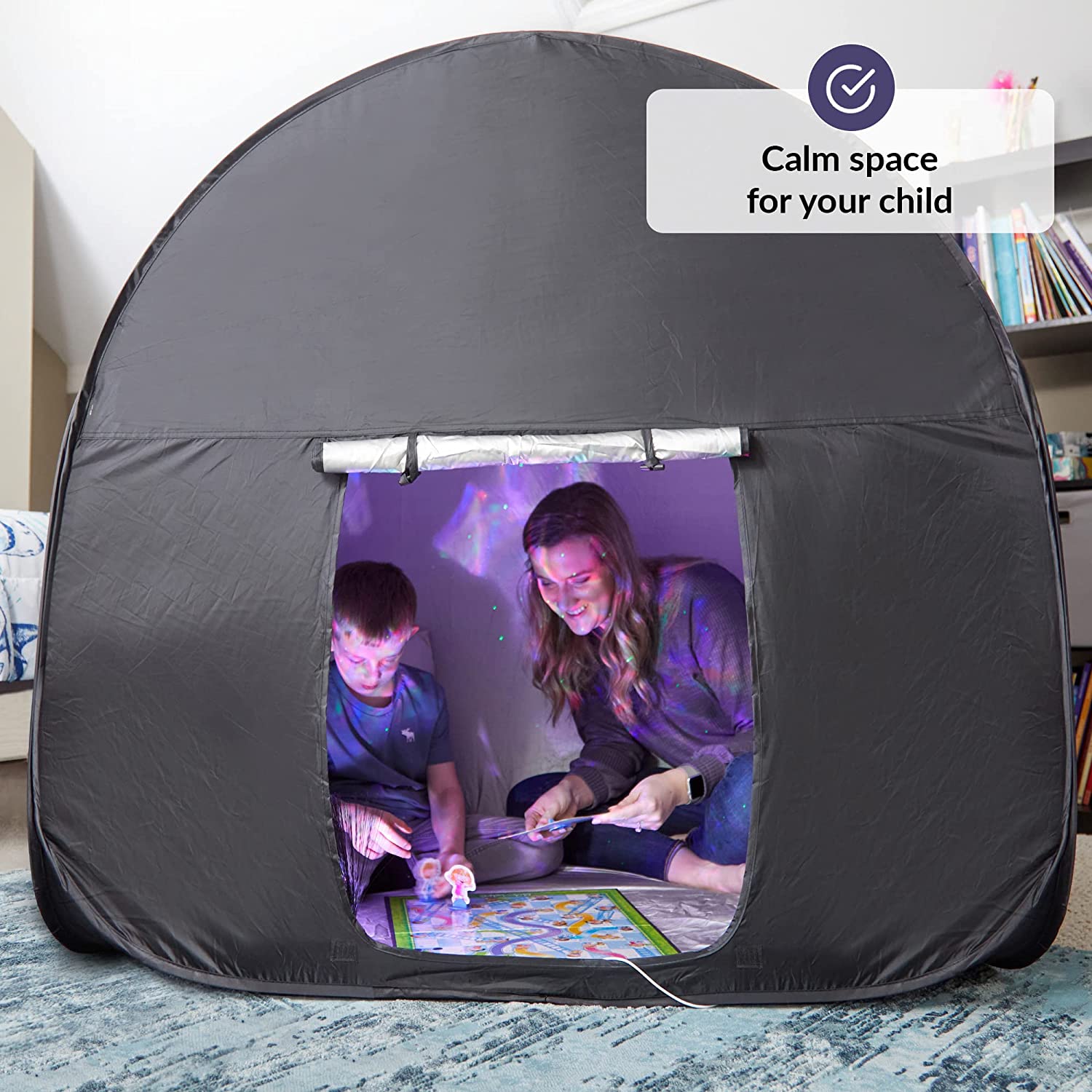Unlock the Joy and Comfort of Your Child with Autism: Build Your Own Sensory Tent Today
Tips for Creating a Calming and Effective Environment in an Autism Sensory Tent
An autism sensory tent can be a lifesaver for parents with children who suffer from autism or sensory processing issues. If you or your child experience overwhelming sensory input, a sensory tent can provide a safe and calming space to retreat to. With this guide, you can learn how to make your own sensory tent and create a peaceful haven for yourself or your loved one.
What is an autism sensory tent?
An autism sensory tent is a small, enclosed space designed to provide a calming and safe environment for individuals with sensory processing issues. It can be filled with sensory items such as soft blankets, weighted blankets, fidget toys, and calming lighting to help reduce anxiety and overstimulation. The tent can be set up in a quiet area of the home or taken on the go for use in public spaces.

Benefits of using an autism sensory tent.
There are many benefits to using an autism sensory tent for individuals with sensory processing issues. It provides a safe and calming space where they can retreat when feeling overwhelmed or overstimulated. The tent can also help improve focus and attention, reduce anxiety and stress, and promote relaxation and better sleep. Additionally, it can be a helpful tool for parents and caregivers to use in managing challenging behaviours and promoting positive coping strategies.

12 Benefits of and autism sensory tent
- Provides a safe and secure environment for the child
- Reduces sensory overload by creating a controlled sensory environment
- Helps the child to calm down and self-regulate
- Improves focus and attention
- Reduces anxiety and stress
- Provides a space for sensory integration activities
- Can be personalized to meet the specific sensory needs of the child
- Offers a quiet and private space for the child to retreat to
- Enhances sensory exploration and experimentation
- Can improve sleep patterns
- Increases independence and confidence in the child
- Provides a therapeutic and therapeutic setting for occupational therapy and other therapeutic interventions
Materials needed to make your tent.
To make an autism sensory tent, you will need a few materials. First, you will need a large piece of fabric, such as a sheet or blanket, to serve as the tent cover. You will also need some type of support structure, such as a tent frame or PVC pipes, to hold the fabric in place. Other materials you may want to consider include pillows, blankets, and soft lighting to create a calming and comfortable environment inside the tent. Finally, you may want to add sensory items such as fidget toys, weighted blankets, or calming scents to enhance the sensory experience.
Step-by-step instructions for making a sensory tent.
To make a sensory tent, first, choose a location where the tent will be set up. Then, assemble the support structure using a tent frame or PVC pipes. Drape the large piece of fabric over the support structure and secure it in place. Add pillows, blankets, and soft lighting to create a calming and comfortable environment inside the tent. Finally, add sensory items such as fidget toys, weighted blankets, or calming scents to enhance the sensory experience. Remember to personalise the tent to the individual’s specific sensory needs and preferences.

Tips for using a sensory tent effectively.
A sensory tent can be a great tool for individuals with sensory processing issues, but it’s important to use it effectively. First, make sure the individual is comfortable and willing to use the tent. Encourage them to take breaks and use the tent as needed. Use the tent as a tool for self-regulation, allowing the individual to take control of their sensory experience. Finally, regularly check in with the individual to see if the tent is still meeting their needs and make adjustments as necessary.
Creating an autism sensory tent can be a fun and rewarding project that can provide a calming space for your child to manage their sensory input.
By following the tips in this guide, you can create a sensory tent that meets your child’s unique needs and preferences. However, if you prefer to purchase a pre-made sensory tent, there are many great options available on the market.
To view the best 5 autism sensory tents available, click HERE. Remember, no matter which option you choose, the most important thing is to provide a safe and calming space for your child to retreat to when they need it.